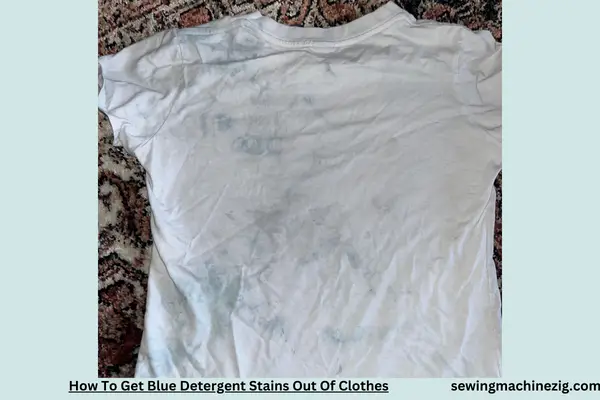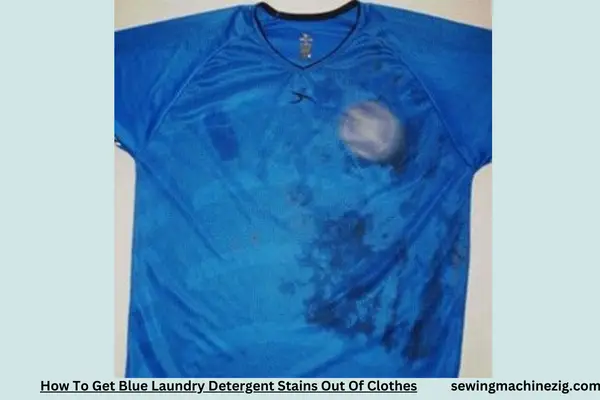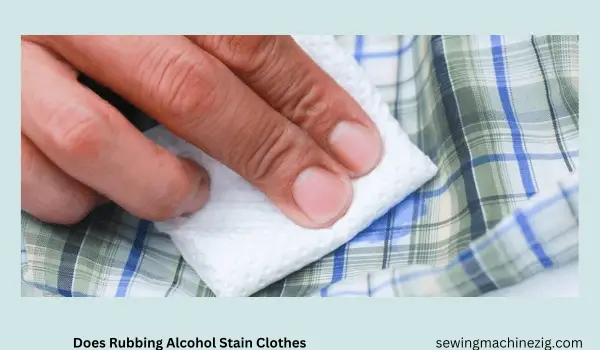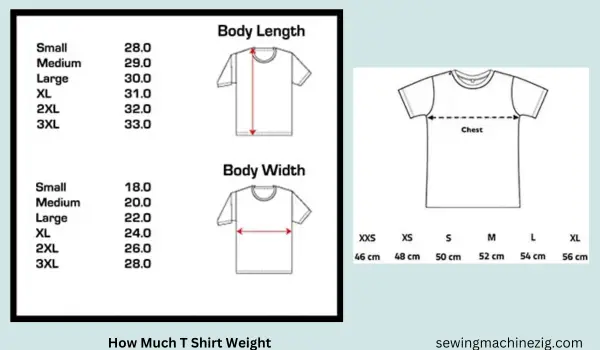
Embarking on the quest for laundry mastery, one encounters the persistent challenge of eradicating blue detergent stains from clothes. Navigating the spectrum of fabric care becomes paramount when faced with the indelible mark of accidental spills.
This guide delves into the art of remediation, answering the query: “How To Get Blue Detergent Stains Out Of Clothes?” Unravel the multifaceted strategies where precision meets efficacy. From stain lifters to gentle concoctions, each technique becomes a strategic stroke in the canvas of stain removal. Join this odyssey, decoding the secret language of fabric care and bidding adieu to stubborn detergent imprints.
How To Get Blue Detergent Stains Out Of Clothes Detailed Answer

Dealing with unexpected blue detergent stains on your clothes can be a laundry dilemma. Fear not! In this step-by-step guide, we will explore effective methods to banish those stubborn blue marks and revive your clothes to their pristine condition. Let’s embark on a journey of laundry alchemy to restore the vibrancy of your wardrobe.
Step 1: Swift Action is Key
When you discover blue detergent stains on your clothes, prompt action is crucial. The longer the stains linger, the more challenging they can be to remove. Begin by separating the stained garment from the rest of your laundry to prevent potential transfer of the detergent to other clothing items.
Step 2: Blot, Don’t Rub
- Absorb Excess Detergent:
- Use a clean, white cloth or paper towel to blot the stain gently. Avoid rubbing, as this can spread the detergent further and set the stain deeper into the fabric.
- Prevent Further Spread:
- Blotting helps absorb excess detergent and prevents the stain from becoming more extensive.
Step 3: Rinse with Cold Water
- Immediate Rinse:
- Rinse the stained area under cold, running water as quickly as possible. Cold water is effective in preventing the detergent from setting into the fabric fibers.
- Water Pressure:
- Use the pressure of the water stream to help flush out the detergent. Hold the fabric under the water, directing it towards the backside of the stain.
Step 4: Pre-Treat with Liquid Laundry Detergent
- Apply Liquid Detergent:
- Grab a bottle of liquid laundry detergent and apply a small amount directly to the stain. Ensure the detergent is a color-safe variety to avoid exacerbating the issue.
- Gently Rub:
- Using your fingers or a soft brush, gently rub the liquid detergent into the stain. This helps break down the detergent residue and enhances the stain removal process.
Step 5: Soak in Vinegar Solution
- Vinegar and Water Mixture:
- Prepare a solution of equal parts white vinegar and cold water. Submerge the stained garment in this solution, ensuring the stain is fully immersed.
- Soak Time:
- Allow the clothing to soak for 15 to 30 minutes. Vinegar helps neutralize the detergent and aids in lifting the stain from the fabric.
Common Issues and Solutions:
- Fading of Fabric Color:
- Issue: The fabric color seems to be fading during the stain removal process.
- Solution: Test a small, inconspicuous area of the fabric before applying any stain removal methods. If color fading occurs, consider seeking professional help or using a color restoration product.
- Persistent Stain Residue:
- Issue: Some residue of the blue detergent stain remains after initial treatment.
- Solution: Repeat the stain removal steps, paying extra attention to thorough rinsing and soaking. For stubborn stains, consider using a specialized stain remover or consulting a professional cleaner.
- Texture or Fabric Distortion:
- Issue: The fabric texture changes or distorts during stain removal attempts.
- Solution: Use gentle methods and avoid excessive rubbing or harsh chemicals. If the fabric is delicate or prone to distortion, consult care labels and opt for professional cleaning if necessary.
- Unpleasant Odor After Treatment:
- Issue: An unpleasant odor lingers after treating the stain.
- Solution: Wash the garment as usual with a mild detergent and add a cup of baking soda to the wash. Baking soda helps neutralize odors and freshen the fabric.
Step 6: Wash as Usual
- Normal Laundry Cycle:
- After soaking, wash the garment as usual in cold water. Use a regular laundry detergent, preferably one that is known for being color-safe.
- Check Stain Before Drying:
- Before placing the garment in the dryer, check the stained area to ensure the blue detergent stain is completely gone. Heat from the dryer can set stains, so it’s essential to verify the success of the stain removal.
Step 7: Air-Dry and Inspect
- Air-Dry Method:
- Opt for air-drying the garment instead of using a dryer. This allows you to inspect the stain after washing and prevent any potential heat setting.
- Inspect Thoroughly:
- Examine the stained area under good lighting to ensure the blue detergent stain is completely eliminated. If any residue remains, repeat the stain removal process before further laundering.
Step 8: Seek Professional Assistance (if necessary)
- Consult a Professional Cleaner:
- If the blue detergent stain persists after multiple attempts, or if you are dealing with a delicate and valuable garment, consider seeking professional assistance. Professional cleaners have the expertise and tools to tackle stubborn stains effectively.
- Communicate the Issue:
- When consulting a professional cleaner, communicate the specifics of the stain and the steps you’ve taken. This information helps them tailor their approach for optimal results.
Step 9: Learn from the Experience
- Review Laundry Practices:
- Reflect on your laundry practices to identify potential causes of detergent stains. Avoid overloading the washing machine and ensure proper dilution of detergent to minimize future occurrences.
- Color-Safe Detergent:
- Consider using a color-safe detergent, especially for garments with vibrant colors. Color-safe detergents are formulated to minimize color bleeding and staining.
Summary: Conquering Laundry Challenges
Banishing blue detergent stains from your clothes requires a combination of swift action, effective stain removal techniques, and a gentle touch.
By following this comprehensive guide How To Get Blue Detergent Stains Out Of Clothes, And addressing common issues along the way, you empower yourself to conquer laundry challenges and keep your wardrobe looking fresh and vibrant. May your laundry adventures be stain-free and your clothes always ready for a bright and colorful future! Happy laundering!
How To Get Blue Detergent Out Of White Clothes

The inadvertent encounter with blue detergent stains on your pristine white clothes can be disheartening, but fear not! In this step-by-step guide, we’ll delve into effective methods to bid farewell to those stubborn blue marks and restore the brilliance of your white garments. Join us on a journey of laundry mastery, where the magic lies in conquering the challenge of blue detergent stains on white clothes.
Step 1: Swift Action for Stain Intervention
Upon discovering blue detergent stains on your white clothes, prompt action becomes your ally. Act swiftly to prevent the detergent from settling into the fabric, making the stain removal process more challenging. Separate the stained garment from the rest of your laundry to avoid potential cross-contamination.
Step 2: Blotting for Initial Stain Absorption
- Blot, Don’t Rub:
- Employ a clean, white cloth or paper towel to gently blot the stain. Avoid rubbing, as this can spread the detergent and intensify the stain.
- Prevent Spread:
- Blotting helps absorb excess detergent and prevents the stain from spreading further on the white fabric.
Step 3: Rinse with Cold Water
- Immediate Rinse:
- Rinse the stained area under cold, running water as swiftly as possible. Cold water is effective in preventing the detergent from setting into the fibers of the white fabric.
- Water Pressure:
- Utilize the pressure of the water stream to help flush out the detergent. Hold the fabric under the water, directing it towards the backside of the stain.
Step 4: Pre-Treat with Liquid Laundry Detergent
- Apply Liquid Detergent:
- Retrieve a bottle of liquid laundry detergent, preferably a color-safe variety, and apply a small amount directly to the stain.
- Gentle Rubbing:
- Gently rub the liquid detergent into the stain using your fingers or a soft brush. This aids in breaking down the detergent residue and enhances stain removal.
Step 5: Soak in Baking Soda Solution
- Baking Soda and Water Mixture:
- Create a solution by mixing baking soda with water. Apply this paste-like mixture to the stained area of the white clothes.
- Soak Time:
- Allow the garment to soak for approximately 15 to 30 minutes. Baking soda helps neutralize the detergent and facilitates the removal of stains from white fabric.
Common Issues and Solutions:
- Color Bleeding from Detergent:
- Issue: The blue detergent appears to be bleeding onto the white fabric.
- Solution: Act quickly to rinse the garment thoroughly with cold water. Avoid hot water, as it can set the stain. Consider using a color-safe bleach if the bleeding persists.
- Persistent Stain Residue:
- Issue: Some residue of the blue detergent stain remains after initial treatment.
- Solution: Repeat the stain removal steps, paying extra attention to thorough rinsing and soaking. For stubborn stains, consider using a specialized stain remover or consulting a professional cleaner.
- Unpleasant Odor After Treatment:
- Issue: An unpleasant odor lingers after treating the stain.
- Solution: Wash the garment as usual with a mild detergent and add a cup of white vinegar to the wash. White vinegar helps neutralize odors and freshen the fabric.
- Texture or Fabric Distortion:
- Issue: The fabric texture changes or distorts during stain removal attempts.
- Solution: Use gentle methods and avoid excessive rubbing or harsh chemicals. If the fabric is delicate or prone to distortion, consult care labels and opt for professional cleaning if necessary.
Step 6: Wash as Usual
- Normal Laundry Cycle:
- After soaking, wash the white garment as usual in cold water. Utilize a regular laundry detergent, ensuring it is suitable for whites and known for being color-safe.
- Check Stain Before Drying:
- Before placing the garment in the dryer, inspect the stained area to ensure the blue detergent stain is completely eradicated. Avoid heat drying until you confirm the success of the stain removal.
Step 7: Sun-Dry for Added Whitening Effect
- Sunlight Exposure:
- Harness the natural whitening power of the sun by air-drying your white clothes outdoors. Sunlight acts as a natural bleach and can enhance the whiteness of the fabric.
- Spot Check:
- Perform a spot check before exposing the entire garment to sunlight to ensure colorfastness. Direct sunlight may cause colors to fade, so this step is crucial for preserving the vibrancy of colored elements on the garment.
Step 8: Seek Professional Assistance (if necessary)
- Consult a Professional Cleaner:
- If the blue detergent stain persists after multiple attempts, or if you are dealing with a delicate and valuable white garment, consider seeking professional assistance. Professional cleaners have the expertise and tools to tackle stubborn stains effectively.
- Communicate the Issue:
- When consulting a professional cleaner, provide details about the stain and the steps you’ve taken. This information helps them tailor their approach for optimal results.
Step 9: Learn from the Experience
- Review Laundry Practices:
- Reflect on your laundry practices to identify potential causes of detergent stains. Avoid overloading the washing machine and ensure proper dilution of detergent to minimize future occurrences.
- Color-Safe Detergent:
- Consider using a color-safe detergent, especially for whites with delicate colors or patterns. Color-safe detergents are formulated to minimize color bleeding and staining.
Summary: Celebrating Stain-Free Whites
Navigating the challenge of blue detergent stains on white clothes requires a combination of quick action, effective stain removal techniques, and a gentle touch.
By following this comprehensive guide and addressing common issues along the way, you equip yourself with the tools to maintain stain-free whites and keep your wardrobe looking pristine. May your whites always sparkle, and your laundry endeavors be marked by success. Happy laundering!
How To Get Blue Laundry Detergent Stains Out Of Clothes

Discovering blue laundry detergent stains on your clothes can be a perplexing moment, but fear not! In this step-by-step guide, we will delve into effective methods to unravel the mystery of these stains and restore your clothes to their pristine condition. Join us on a journey of stain removal mastery, where conquering blue detergent stains becomes a straightforward and empowering process.
Step 1: Swift Response to Stain Discovery
Upon encountering blue laundry detergent stains on your clothes, a quick response is essential. Act promptly to prevent the detergent from setting into the fabric, making the stain removal process more challenging. Begin by separating the stained garment from the rest of your laundry to avoid potential transfer of the detergent to other clothing items.
Step 2: Blotting for Initial Stain Absorption
- Blot, Don’t Rub:
- Use a clean, white cloth or paper towel to gently blot the stain. Avoid rubbing, as this can spread the detergent and intensify the stain.
- Prevent Spread:
- Blotting helps absorb excess detergent and prevents the stain from spreading further on the fabric.
Step 3: Rinse with Cold Water
- Immediate Rinse:
- Rinse the stained area under cold, running water as swiftly as possible. Cold water is effective in preventing the detergent from setting into the fibers of the fabric.
- Water Pressure:
- Utilize the pressure of the water stream to help flush out the detergent. Hold the fabric under the water, directing it towards the backside of the stain.
Step 4: Pre-Treat with Liquid Laundry Detergent
- Apply Liquid Detergent:
- Retrieve a bottle of liquid laundry detergent, preferably a color-safe variety, and apply a small amount directly to the stain.
- Gentle Rubbing:
- Gently rub the liquid detergent into the stain using your fingers or a soft brush. This aids in breaking down the detergent residue and enhances the stain removal process.
Step 5: Soak in White Vinegar Solution
- White Vinegar and Water Mixture:
- Create a solution by mixing equal parts white vinegar and water. Submerge the stained garment in this solution, ensuring the stain is fully immersed.
- Soak Time:
- Allow the clothing to soak for approximately 15 to 30 minutes. White vinegar helps neutralize the detergent and aids in lifting the stain from the fabric.
Common Issues and Solutions:
- Color Bleeding from Detergent:
- Issue: The blue detergent appears to be bleeding onto the fabric.
- Solution: Act quickly to rinse the garment thoroughly with cold water. Avoid hot water, as it can set the stain. Consider using a color-safe bleach if the bleeding persists.
- Persistent Stain Residue:
- Issue: Some residue of the blue detergent stain remains after initial treatment.
- Solution: Repeat the stain removal steps, paying extra attention to thorough rinsing and soaking. For stubborn stains, consider using a specialized stain remover or consulting a professional cleaner.
- Unpleasant Odor After Treatment:
- Issue: An unpleasant odor lingers after treating the stain.
- Solution: Wash the garment as usual with a mild detergent and add a cup of white vinegar to the wash. White vinegar helps neutralize odors and freshen the fabric.
- Texture or Fabric Distortion:
- Issue: The fabric texture changes or distorts during stain removal attempts.
- Solution: Use gentle methods and avoid excessive rubbing or harsh chemicals. If the fabric is delicate or prone to distortion, consult care labels and opt for professional cleaning if necessary.
Step 6: Wash as Usual
- Normal Laundry Cycle:
- After soaking, wash the garment as usual in cold water. Utilize a regular laundry detergent, ensuring it is suitable for the fabric and known for being color-safe.
- Check Stain Before Drying:
- Before placing the garment in the dryer, inspect the stained area to ensure the blue detergent stain is completely eradicated. Avoid heat drying until you confirm the success of the stain removal.
Step 7: Air-Dry and Inspect
- Air-Dry Method:
- Opt for air-drying the garment instead of using a dryer. This allows you to inspect the stain after washing and prevents any potential heat setting.
- Inspect Thoroughly:
- Examine the stained area under good lighting to ensure the blue detergent stain is completely eliminated. If any residue remains, repeat the stain removal process before further laundering.
Step 8: Seek Professional Assistance (if necessary)
- Consult a Professional Cleaner:
- If the blue detergent stain persists after multiple attempts, or if you are dealing with a delicate and valuable garment, consider seeking professional assistance. Professional cleaners have the expertise and tools to tackle stubborn stains effectively.
- Communicate the Issue:
- When consulting a professional cleaner, provide details about the stain and the steps you’ve taken. This information helps them tailor their approach for optimal results.
Step 9: Learn from the Experience
- Review Laundry Practices:
- Reflect on your laundry practices to identify potential causes of detergent stains. Avoid overloading the washing machine and ensure proper dilution of detergent to minimize future occurrences.
- Color-Safe Detergent:
- Consider using a color-safe detergent, especially for garments with vibrant colors. Color-safe detergents are formulated to minimize color bleeding and staining.
Summary: Mastering the Art of Stain Removal
Embarking on the journey of blue laundry detergent stain removal transforms a laundry challenge into an empowering experience.
By following this comprehensive guide and addressing common issues along the way, you equip yourself with the skills to conquer stains and keep your clothes looking fresh and vibrant. May your laundry adventures be marked by successful stain removal and garments that shine like new. Happy laundering!
Conclusion
In conclusion,”How To Get Blue Detergent Stains Out Of Clothes” mastering How To Get Blue Detergent Stains Out Of Clothes is a testament to preserving the vibrancy of your wardrobe. Armed with effective stain removal techniques, you ensure that your garments remain as brilliant as the day you bought them.
Whether through natural remedies or specialized stain removers, tackling blue detergent stains becomes a seamless process. So, reclaim the color and pristine condition of your clothes, and let your wardrobe shine, free from the unsightly marks of detergent mishaps. “How To Get Blue Detergent Stains Out Of Clothes“
FAQS
Q1: How can I get blue detergent stains out of clothes?
A1: Removing blue detergent stains from clothes requires prompt action. Begin by blotting excess detergent gently. Mix a solution of one part white vinegar and two parts water, then dab the stain. Wash the garment with a mild detergent, and avoid heat until the stain is completely gone. “How To Get Blue Detergent Stains Out Of Clothes“
Q2: Can I use bleach to remove blue detergent stains from colored clothes?
A2: It’s not recommended to use bleach on colored clothes, as it may cause further discoloration. Stick to color-safe stain removal methods, like vinegar solutions, to effectively eliminate blue detergent stains. “How To Get Blue Detergent Stains Out Of Clothes“
Q3: What should I do if the blue detergent stain is still visible after washing?
A3: If the stain persists, repeat the stain removal process before drying the garment. Avoid drying as heat can set the stain. For stubborn stains, consider consulting a professional cleaner for specialized assistance. “How To Get Blue Detergent Stains Out Of Clothes“
Q4: Can I use cold water to remove blue detergent stains?
A4: Yes, cold water is suitable for treating blue detergent stains. Hot water can set the stain, so it’s best to use cold water for both initial treatment and washing the garment. “How To Get Blue Detergent Stains Out Of Clothes“
Q5: Should I scrub the stain vigorously to remove blue detergent stains?
A5: Avoid vigorous scrubbing, as it may spread the stain or damage the fabric. Instead, gently blot and dab the stain with the stain removal solution to prevent further harm to the clothing fibers. “How To Get Blue Detergent Stains Out Of Clothes“
Q6: Can I use lemon juice to remove blue detergent stains from clothes?
A6: Lemon juice can be effective due to its natural bleaching properties. Mix lemon juice with salt or baking soda to create a paste, apply it to the stain, and let it sit before washing the garment as usual. “How To Get Blue Detergent Stains Out Of Clothes“



